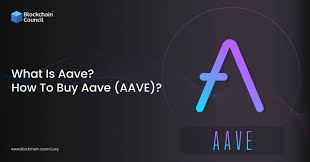In recent years, the evolution of language has been marked by the emergence of various digital and cultural dialects. One of the most prominent of these is aave, or African American Vernacular English. AAVE, often called Ebonics, is a variety of English spoken primarily by Black communities, especially those in urban areas in the United States. This linguistic system, with its distinct grammar, vocabulary, and pronunciation, plays an integral role in the cultural identity of African Americans. But beyond its cultural roots, AAVE has also had a profound influence on mainstream English, particularly through music, social media, and popular culture.
The Roots and Evolution of AAVE
AAVE’s origins can be traced back to the time of slavery in the United States. Enslaved Africans were forcibly brought to the country and often spoke various African languages. When these individuals were made to learn English, the result was a hybrid linguistic form that drew on African syntax, pronunciation, and structure, while incorporating elements of English. Over time, this unique dialect evolved as African Americans began to develop their own identity and culture, further distancing themselves from the dominant English-speaking culture of the time.
AAVE is not merely a slang or “broken” version of English, as it is often mischaracterized. It is a fully developed linguistic system with its own set of rules for pronunciation, syntax, and grammar. This makes it a legitimate form of communication in its own right. For example, the use of double negatives in AAVE, as in “I don’t know nothing,” follows a grammatical structure that is consistent and purposeful, serving to emphasize negation. Similarly, the use of “be” to denote habitual action, as in “She be working,” reflects a specific aspect of time and behavior not captured by standard English.
AAVE and Popular Culture
One of the most significant ways AAVE has entered the mainstream is through music, particularly in genres like hip-hop, rap, and R&B. Artists like Tupac Shakur, Jay-Z, Beyoncé, and Kendrick Lamar have brought AAVE to global audiences, making it an important part of the musical landscape. The lyrics in their songs often incorporate elements of AAVE, giving voice to the lived experiences of Black Americans. This has helped AAVE transcend its regional roots and gain recognition on a global scale.
Social media platforms, especially Twitter, Instagram, and TikTok, have also played a pivotal role in the widespread use and popularization of AAVE. In these spaces, young people—many of them Black—have created viral trends, memes, and expressions that often incorporate AAVE. Phrases like “slay,” “periodt,” “mood,” and “finna” (meaning “about to”) have entered the everyday lexicon of millions, influencing how people across different cultures and backgrounds communicate online.
The Appropriation and Commodification of AAVE
While AAVE has gained recognition and influence in mainstream culture, it is important to address the issue of cultural appropriation. AAVE, once marginalized and stigmatized, is often co-opted by non-Black individuals—especially in the realms of social media and entertainment—without understanding its cultural significance. For example, influencers or celebrities may use AAVE phrases for effect or to seem “cool” without acknowledging the history and struggles tied to the language.
This phenomenon can be problematic when it leads to the commodification of Black culture. AAVE is a form of self-expression and identity for many African Americans, and its use by people outside of the community can dilute its meaning. Additionally, non-Black individuals who use AAVE may not face the same social and cultural consequences as Black speakers, who may still experience discrimination or marginalization based on their language or accent.
The Linguistic and Social Significance of AAVE
Linguistically, AAVE is a testament to the adaptability and resilience of African American communities. It challenges the notion of a single, “correct” way to speak English, highlighting the diversity of the language and the richness of its variations. Far from being a “deficient” form of communication, AAVE is a full and sophisticated system with its own structure and nuances.
Socially, AAVE serves as a symbol of resistance, identity, and solidarity. For African Americans, the use of AAVE can be a way to affirm cultural heritage and resist the forces of assimilation that have often sought to erase or diminish their identity. AAVE is a living, breathing expression of Black history, reflecting the triumphs, struggles, and everyday experiences of those who speak it.
Conclusion: AAVE in the Future
As we look to the future, AAVE will continue to evolve and influence the English language in complex ways. Its growing presence in digital spaces, popular culture, and the arts will likely lead to even greater cross-cultural exchanges and innovations in language. However, as AAVE becomes more widely adopted, it is important to remember its cultural origins and the significance it holds for African American communities.
The growing recognition of AAVE as a legitimate and important linguistic system offers an opportunity for a more inclusive understanding of language diversity. As with any language or dialect, its value lies in the identity, history, and lived experiences it represents. AAVE is not just a mode of communication—it is a reflection of culture, resilience, and resistance, and it deserves respect for its role in shaping the English language and American culture as a whole.


